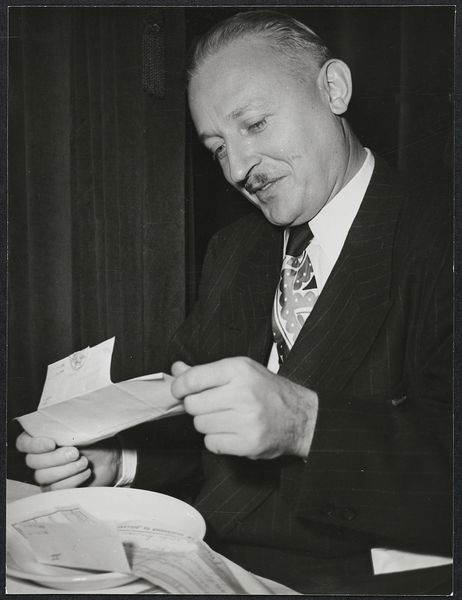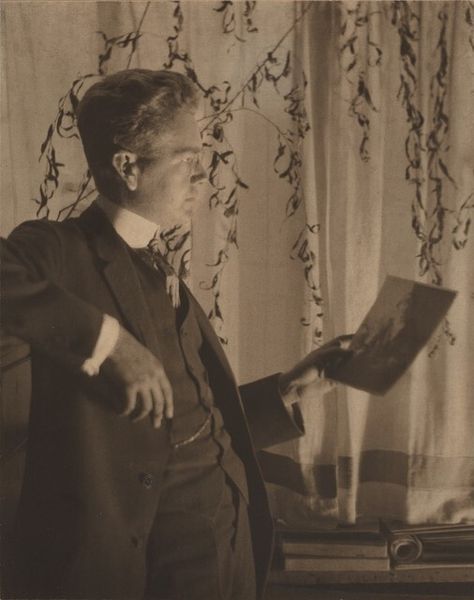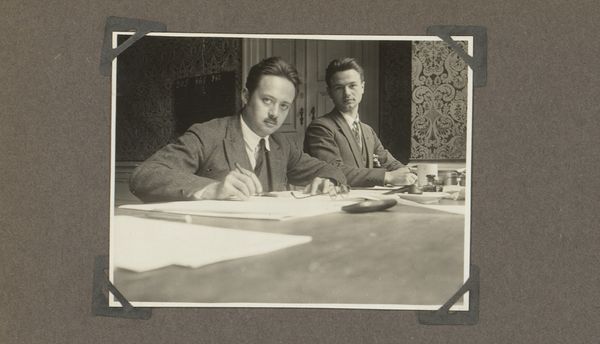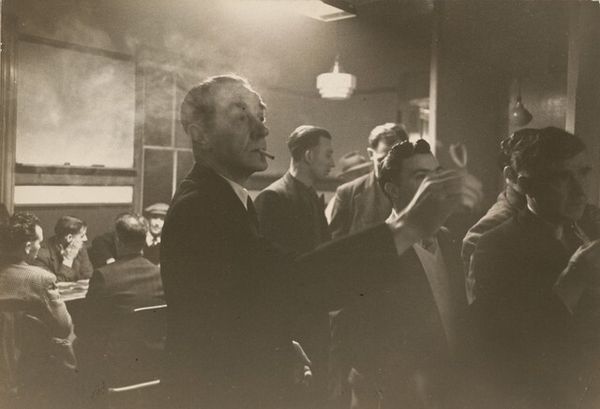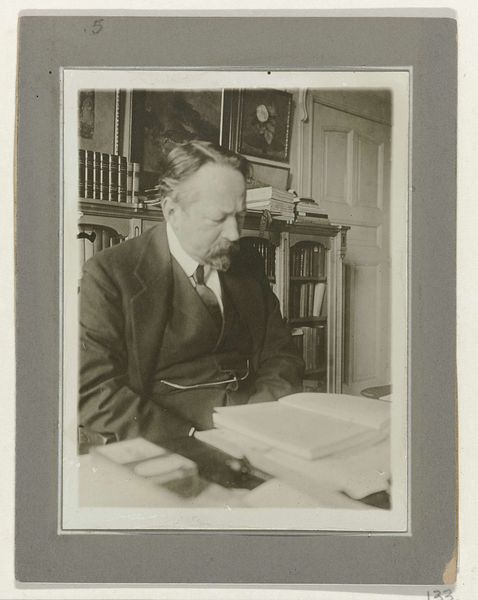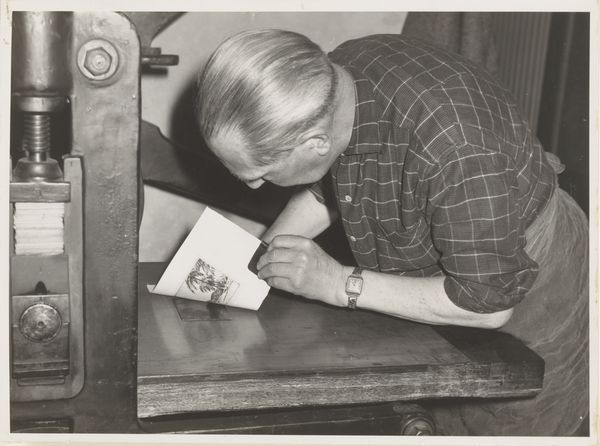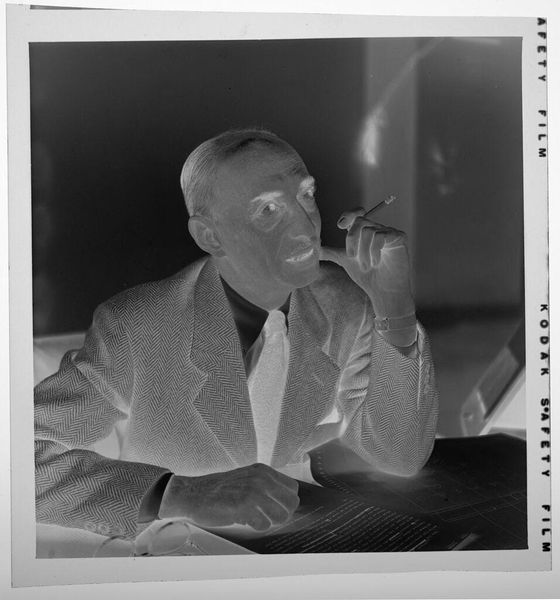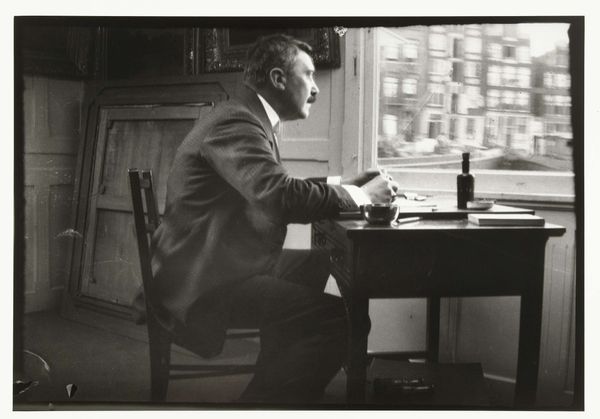
photography
#
portrait
#
black and white photography
#
photography
#
black and white
#
monochrome photography
#
monochrome
#
modernism
#
realism
#
monochrome
Dimensions: height 19.5 cm, width 14.5 cm
Copyright: Rijks Museum: Open Domain
Curator: J.A.E. Buiskool, captured in 1948. Particam produced this photograph as one of the participants of the RTC, and it is now held in the Rijksmuseum. Editor: My initial feeling is one of contained energy. He’s holding those letters like they're precious, yet he seems weary. Makes you wonder what’s on his mind. Curator: Considering this portrait emerged in the postwar period, one can analyze it within the context of reconstruction and recovery. The formality of dress, the focused gaze...it speaks of a generation rebuilding, processing, and receiving correspondence which would have often delivered life-altering news. Editor: You see a sort of collective processing, I see a solitary figure weighed down by words, almost trapped by them. I keep circling back to his hand – there's a ring, probably a wedding ring. Could it be loss, expectation, perhaps the heavy burden of promises? Curator: Precisely. Black and white photography, as seen here, took on an almost documentary truth in this era. We have the capacity to view imagery through the lens of pure historical documentation, and equally we must recognise it is created by an individual with creative and expressive agendas, who frames moments for posterity. Editor: There is a lot going on behind the surface of that monochrome print, but that’s where art lives. Don't you think, sometimes, the strongest truths are the quiet ones, the unspoken anxieties captured in a gaze, or the careful arrangement of details like those letters? The mood hangs, suspended in time, it allows one to read many stories into this person's posture. Curator: I believe you are right. These artistic framings open avenues for dialogue regarding broader cultural realities. Considering its original setting in the post-war period, Particam’s work helps viewers ponder those historical touchpoints, while encouraging personal interpretation. Editor: Absolutely, and like holding onto something tangible, sometimes engaging with artworks such as these allows us to access some emotional understanding. It's a beautiful capture.
Comments
No comments
Be the first to comment and join the conversation on the ultimate creative platform.
